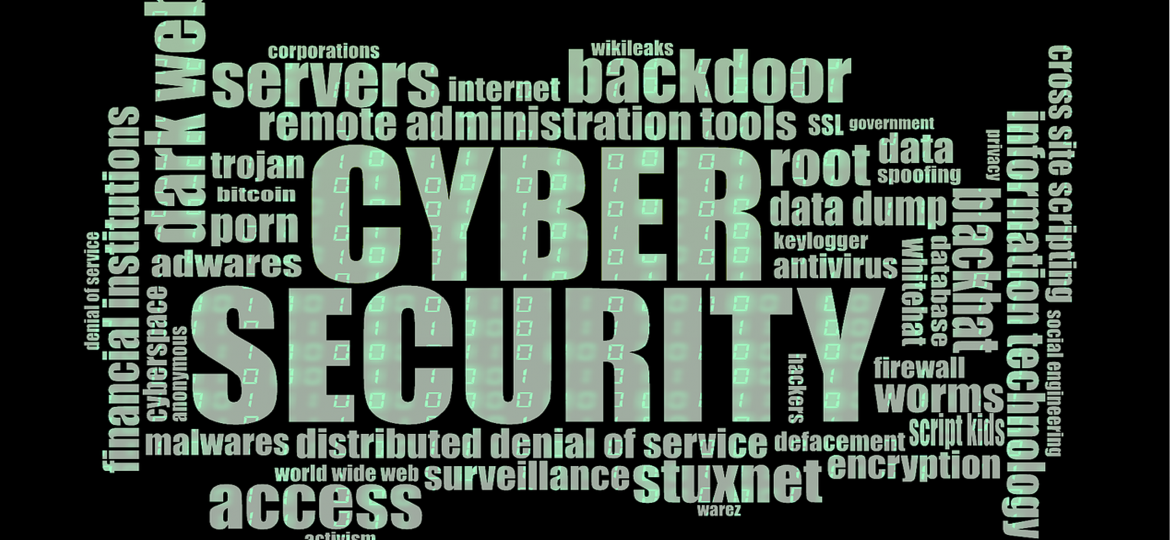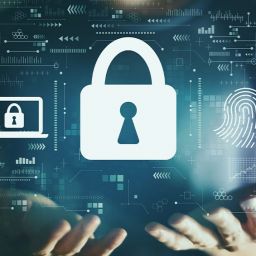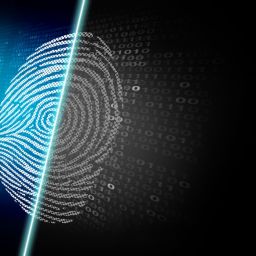
What Is Cyber Security?
The term “cyber security” refers to a group of techniques, tools, and procedures that work together to defend computer systems, networks, and data against hacker attacks and illegal access. Protecting all organisational assets against external and internal threats as well as interruptions brought on by natural catastrophes is the primary goal of cyber security.
An successful and efficient cyber security posture necessitates coordinated activities across all of the organization’s information systems because organisational assets are composed of numerous diverse systems.
What is cyber security all about?
Multiple layers of security are dispersed all across computers, networks, programs, or data that one wants to keep secure in an effective cyber security strategy. For a business to have a successful defence against cyber attacks, the people, processes, and technology must all work in harmony. Detection, investigation, and remediation are three crucial security operations functions that can be accelerated by a unified threat management system.
Why is cyber security important?
With a growing number of users, devices, and programs in the modern enterprise, as well as an increased deluge of data, much of which is sensitive or confidential, the importance of cyber security is growing. The increase in volume and complexity of cyber attackers and attack techniques exacerbates the problem.
What are some of the cyber security sub-domains?
Once the powerful Cellular Module is installed, your Security System will be able to connect with our Central Monitoring Station even if high winds pull down a tree and disrupt phone service in your neighborhood. Your Cellular security system will continue to send out a signal even if your insane neighbor digs up the cable while erecting a fence next door. Your security system may still transmit a signal and be monitored even if the power goes out and every line entering your property is disconnected. All thanks to the Cellular Module, a tiny technological miracle
Hundreds of people convert from house phones to cellular every day. Customers who are wise and knowledgeable are switching to Cellular for their phone services, and they are currently switching to Cellular for their security alarm monitoring services. The ideal method for monitoring your system in 2022 and the future is a clear, powerful cellular signal provided by a cellular alarm monitoring system from your security panel to our central monitoring station. Cellular Alarm Monitoring will enable us to deliver the finest service possible to you, which is something we want to do.
Things like the TV remote, WiFi, remote car starters, GPS, and even cellular security are all products of wireless technology. Guard n Watch has promised you that we will be on guard around-the-clock, every day of the year, and that we will act quickly to deploy assistance if necessary. Change to cellular alarm monitoring right away to assist us in helping you
1. Mobile Security
Mobile security refers to the protection of both organisational and personal information stored on mobile devices such as cell phones, laptops, tablets, and so on from a variety of threats such as unauthorized access, device loss or theft, malware, and so on.
2. Application Security
Application security entails implementing various defences against a wide range of threats throughout all software and services utilised within an organisation. To reduce the likelihood of unauthorized access and modification of application resources, it is necessary to design secure application architectures, write secure code, implement strong data input validation, threat modelling, and so on.
3. Cloud Security
Cloud security is concerned with the development of secure cloud architectures and applications for organisations that use different cloud service providers such as AWS, Google, Azure, Rackspace, and others. Protection against various threats is ensured by effective architectural style and environment configuration.
4. End-user education
End-user education identifies the most unexpected aspect of cyber security: people. By not adhering to good security practises, anyone can introduce a virus into a secure system. Teaching users to delete suspicious email attachments, not to plug in unidentified USB drives, and a variety of other important lessons is critical for any organization’s security.
5. Disaster recovery and business continuity
Disaster recovery and business continuity define how a company responds to a cyber security incident or other event that causes the loss of operations or data Disaster recovery policies govern how an organisation helps restore its operations and data in order to resume normal operations following a disaster. Business continuity is the plan that an organisation uses when it is unable to operate due to a lack of resources.
6. Network Security
Trying to implement both hardware and software mechanisms to safeguard the infrastructure and networks from unauthorised access, disruption, and misuse constitutes network security. Effective network security protects organisational assets from a variety of external and internal threats.
7. Identity Management and Data Security
In Cyber Security, Identity management encompasses frameworks, procedures, and activities that enable legitimate individuals to be authenticated and authorised to access information systems within an organisation. Implementing strong information storage mechanisms that guarantee data security at rest and in transit is part of data security.

What Is a Cyber Security Threat?
A cyber security threat is any potentially malicious attack that attempts to gain unauthorised access to data, disrupt digital operations, or damage information. Corporate spies, hacktivists, terrorist groups, hostile nation-states, criminal organisations, lone hackers, and disgruntled employees are all possible sources of cyber threats.
Several high-profile cyber attacks in recent years have resulted in the exposure of sensitive data. For example, the Equifax data breach in 2017 exposed the personal information of approximately 143 million consumers, including birth dates, addresses, and Social Security numbers. In 2018, Marriott International disclosed that hackers gained access to its servers and stole the personal information of approximately 500 million customers. The failure to implement, test, and retest technical safeguards such as encryption, authentication, and firewalls enabled the cyber security threat in both cases.
Cyber attackers can use sensitive data from an individual or a company to steal information or gain access to financial accounts, among many other potential harmful actions, that is why cyber security professionals are critical for protecting private data.
7 Types of Cyber Security Threats
Keeping up with latest technologies, security trends, and threat intelligence is a difficult task. It is required to protect data and other assets from cyber security threats, which come in a variety of forms.
Cyber security professionals should be well-versed in the following kinds of cyber security threats.
1. Malware
Malware is defined as malicious software, which includes spyware, ransomware, viruses, and worms. Malware is stimulated when a user clicks on a malicious link or attachment, which causes dangerous software to be installed. According to Cisco, once activated, malware can:
- Access to critical network components is restricted (ransomware)
- Install additional malicious software.
- Obtain information covertly by data transmission from the hard drive (spyware)
- Disrupt individual components, rendering the system inoperable.
2. Denial of Service
A denial of service (DoS) attack is a type of cyber attack that overloads a computer or network, rendering it unable to respond to requests. A distributed denial of service (DDoS) attack accomplishes the very same thing, but the attack originates on a computer network. A flood attack is frequently used by cyber attackers to disrupt the “handshake” procedure and carry out a DoS. Other methods may be used, and some cyber attackers may use the time that a network is down to launch additional attacks. According to Jeff Melnick of Netwrix, an information technology security software company, a botnet is a form of DDoS in which millions of systems can be infected with malware and controlled by a hacker. Botnets, also known as zombie systems, attack and overwhelm a target’s processing capabilities. Botnets are spread across the globe and difficult to track down.
3. SQL injection
SQL (structured language query) injection is a form of cyber that is used to gain access to and steal data from a database. Cyber criminals take advantage of flaws in data-driven applications to add malicious code into a database via a malicious SQL statement. This gives them access to the database’s sensitive information.
4. Phishing
Phishing is the practise of sending bogus emails that appear to be from legitimate sources. The goal is to steal sensitive information such as credit card numbers and login details. It is the most prevalent type of cyber attack. You can help protect yourself by educating yourself or using a technology solution that filters malicious emails.
5. Man in the Middle (MITM)
A man-in-the-middle cyber threat occurs when a cyber criminal intercepts communication between two people in order to steal data. On an insecure WiFi network, for example, an attacker could intercept data passing between the victim’s device and the network.
6. Emotet
Emotet is a sophisticated trojan that has the ability to steal data as well as load other malware. Emotet thrives on simple passwords, serving as a reminder of the importance of creating a safe password to protect against cyber threats.
7. Password Attacks
A cyber attacker can gain access to a wealth of information with the right password. Data Insider defines social engineering as “a strategy cyber attackers use that relies heavily on human interaction and frequently involves tricking people into breaking standard security practises.” Accessing a password database or guessing are two other types of password attacks.
What’s the difference between a cyber attack and a security breach?
A cyber attack is not the same thing as a security breach. A cyber attack, as defined above, is an attempt to compromise a system’s security. Attackers attempt to exploit the confidentiality, integrity, or availability of a software or network by employing the various types of cyber attacks described in the preceding section. In contrast, a security breach is a successful event or incident in which a cyber attack results in the compromise of sensitive information, unauthorised access to IT systems, or service disruption.
Attackers consistently attempt a wide range of cyber attacks against their targets in the hope that one of them will result in a security breach. As a result, security breaches highlight another critical component of a comprehensive cyber security strategy: business continuity and incident response (BC-IR). BC-IR assists organisations in dealing with successful cyber attacks. Business Continuity is concerned with keeping critical business systems operational in the event of a security incident, whereas Incident Response is concerned with responding to a security breach and mitigating its impact, as well as facilitating the recovery of IT and business systems.
Evolution of Cyber Security
As the internet and digitally reliant operations develop and change, so do cyber security practices.
The Internet of Things (IoTs)
Individual devices that connect to the internet or other networks provide hackers with an entry point. According to Cytelligence, in 2019, hackers targeted smart home and internet of things (IoT) devices such as smart TVs, voice assistants, connected baby monitors, and cellphones more frequently. Hackers who successfully compromise a connected home gain access not only to users’ Wi-Fi credentials, but also to their data, such as medical records, bank statements, and website login information.
The Explosion of Data
Data storage on personal devices such as laptops and cellphones makes it easier for cyber attackers to gain access to a network via a personal device. For example, former U.S. Secretary of Homeland Security Michael Chertoff warns in his May 2019 book Exploding Data: Reclaiming Our Cyber Security in the Digital Age of widespread exposure of individuals’ personal information, which has become progressively vulnerable to cyber attacks.
As a result, businesses and government agencies require the highest level of cyber security to safeguard their information and operations. Understanding how to respond to the most recent evolving cyber threats is critical for cyber security professionals.
How is automation used in cyber security?
Automation has become an essential component in protecting businesses from the rising number and sophistication of cyber security threats. Using artificial intelligence (AI) and machine learning in areas with large amounts of data can help improve cyber security in three ways:
Human augmentation
Security professionals are frequently overburdened with alerts and repetitive work. AI can assist in reducing alert fatigue by automatically triaging low-risk alarms and automating big data analysis and other repetitive work, freeing up humans for more complex tasks.
Threat response
AI platforms can also generate and automatically implement security safeguards.
Threat detection
AI platforms can analyse data to identify known threats and predict new threats.
Other advantages of cyber security automation include attack classification, malware classification, traffic analysis, compliance analysis, and more.
Emergency Services
It’s best to rely on multiple monitoring methods during power outages. When combined with cellular alarm monitoring, internet monitoring adds an additional layer of security. The greatest cellular communication or technology operates within the anticipated time frame. This guarantees effective and continuous security monitoring to keep your house safe and secured around-the-clock.
11 top cyber security best practices to prevent a breach
How can businesses and individuals protect themselves from cyber attacks? Here are our top cyber security recommendations:
1. Conduct cyber security awareness
A strong cyber security strategy will fail if employees are not educated on cyber security, company policies, and incident reporting. Employees’ unintentional or intentional malicious actions can cause even the best technical defences to fail, resulting in a costly security breach. The best way to reduce negligence and the possibility of a security violation is to educate employees and raise awareness of company policies and security best practices through seminars, classes, and online courses.
2. Risk assessment
Organizations should conduct a structured risk assessment to identify all valuable assets and prioritising them based on the impact of a vulnerable asset. This will assist organizations in determining how to best allocate their resources to secure each valuable asset.
3. Use the principle of least privilege
According to the principle of least privilege, both software and personnel should be given the fewest permissions required to carry out their duties. This mitigates the impact of a successful security breach by preventing user accounts with lower permissions from affecting important assets which require a higher-level set of permissions. In addition, all high-level user accounts with unrestricted permissions should use two-factor authentication.
4. Software patch management and updates
To reduce threats to their IT systems, it is critical for overall organisational IT teams to perform vulnerability identification, classification, remediation, and mitigation within all software and networks that they use. Moreover, security experts and attackers occasionally discover new vulnerabilities in various software, which are reported to software vendors or made public. Malware and cyber attackers frequently exploit these flaws. Software vendors release updates on a regular basis to patch and mitigate these vulnerabilities. As a result, keeping IT systems up to date aids in the protection of organisational assets.
5. Implement a BC-IR plan
Having a strong BC-IR (business continuity and incidence response) plans and policies in place will allow an organisation to respond effectively to cyber attacks and security breaches while keeping critical business systems operational.
6. Backup data
Making a back up of all the data on a regular basis increases redundancy and ensures that no sensitive data is lost or compromised following a security breach. Data integrity and availability are jeopardised by attacks such as injections and ransomware. Backups can be useful in such situations.
7. encryption for data
Strong encryption algorithms should be used to store and transfer all sensitive information. Data encryption ensures confidentiality. Key management and rotation policies should be implemented. SSL/TLS should be used by all web applications/software.
8. Take periodic security reviews
Having all software and networks undergo periodic security reviews aids in detecting security issues early and in a secure environment. Application and network penetration testing, source code reviews, architecture design reviews and other security reviews are examples. When security flaws are discovered, organisations should prioritise and ameliorate them as quickly as possible.
9. Enforce secure password policies
Organizations should force all the employees to use strong passwords that comply to industry standards. They should also be required to be changed on a regular basis to help protect against compromised passwords. Additionally, password storage should adhere to industry best practises such as the use of salts and strong hash functions.
10. Implement strong input validation
In many cases, strong input validation serves as the first line of defence against different kinds of injection attacks. Strong input validation tends to help filter out malicious input packets that the application would process because software and applications are developed to accept user input, which opens them up to attacks. Moreover, when writing software, secure coding standards must be used to avoid most of the common vulnerabilities.
11. Avoid using Insecure WiFi
In public places, avoid using insecure WiFi networks, Insecure networks expose you to man-in-the-middle attacks.
12. Design software having security in mind
When developing applications, writing software, or designing networks, always design having security in mind. Remember that the expense of refactoring software and adding security measures later is far greater than the cost of building security in from the start. Application security helps to reduce threats and make sure that when software/networks fail, they fail safely.

















